Hi GT! You can always look at three things - the debate about politics, styles of music and in the genre of "not the same / still the same." We are using the last topic now, because the time has come to figure out: is the overclocking of computer hardware true in a deep crisis, or are these “old believers” hurt that every housewife can afford a PC today? Welcome to the cut, where we go through the main claims to modern overclocking and try to compare "then and now."
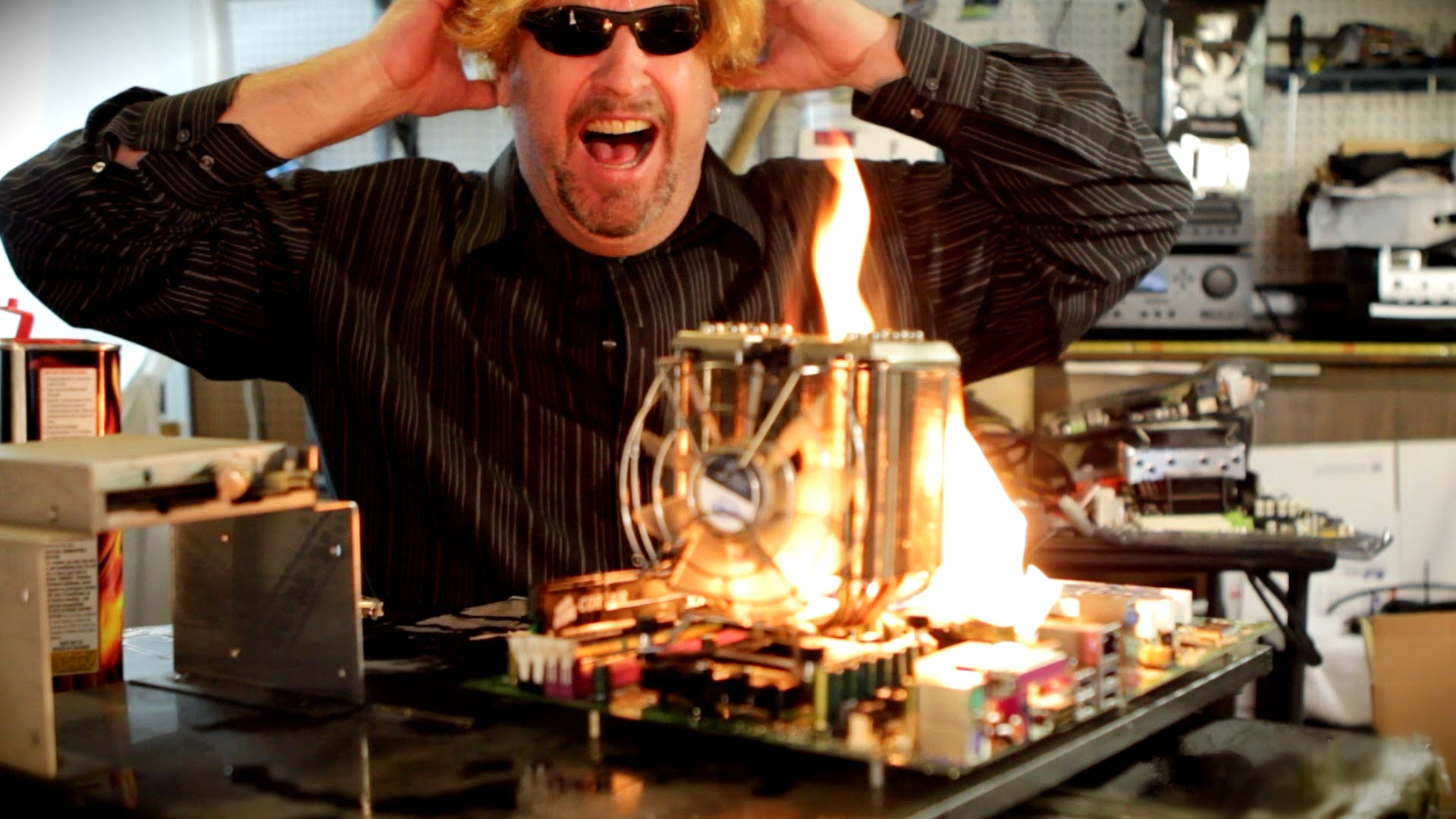
"Everyone has long known" №1. Overclocking died as soon as marketers intervened
Many of today's popular things and phenomena at the beginning of their journey were “elite” - financially or simply as information for “their own”. Artists who are dear to the heart, who used to be the underground, are being filmed today in advertising all kinds of garbage and with a smile shake hands with "slippery" politicians. Internet resources that were created as opposed to forums and social networks, today are crammed with an audience that they used to oppose. Even the "computer-computing" hobbies have now become a very broad "get-together", it smells of spicy marketing everywhere and even the iron accelerates somehow not in the same way as in the times when the "grandfathers started".
It remains only to find out what is considered a “beginning” and understand whether overclocking really did not begin with marketing. The easiest thing to do is to refer to the era of Intel 80286, when the ISA bus was no longer nailed down and enthusiasts had the opportunity to overclock separate subsystems, not the whole computer at all. But at about the same time, (and maybe a little earlier), Taiwanese thought about how to make their IBM XT clones cooler than their competitors, and began to replace the crystal oscillator in the clock generator with a
processor overclocking device with their products. It happened around the same mid-1980s. and, if we put aside the axiom “the saints were times!”, this approach is almost no different from the modern “limited super-duper-overclocking” series of components. Here they are, the proto-marketers, after which the acceleration "died." Wasn’t he too fast in such a case?
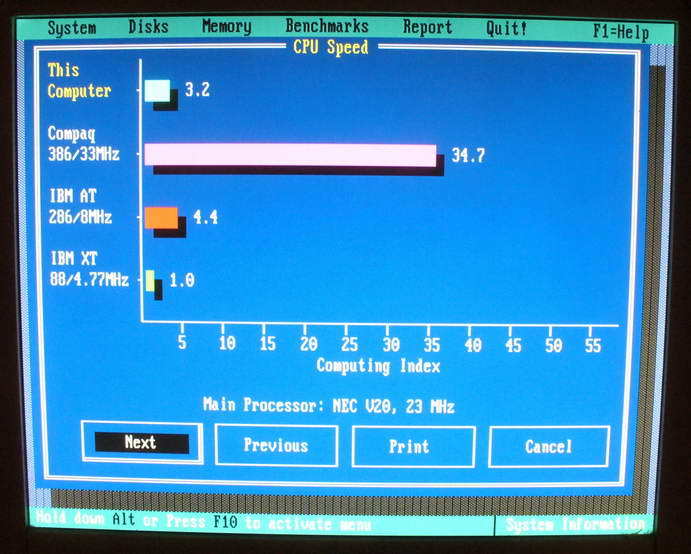 IBM-compatible Juko XT and its overclocking with custom quartz resonators ( source )
IBM-compatible Juko XT and its overclocking with custom quartz resonators ( source )"Everyone has long known" №2. Overclocking was born as a way to balance old processors with new ones.
Bike level "console did not break open just because they didn’t really want to." No, ladies and gentlemen, - overclocking was born along with the upgrade, as a response to unification, and was a way to try your luck and “inflate” the younger processor of the previous generation to the level of the flagship.
The upgrade in its everyday sense came to computers in 1989. While our compatriots were watching the internal problems of the state, Intel abroad was trying hard to sell the new processor 80486 (i486) to customers instead of 80386 four years ago. Buyers resisted such happiness, because the old CPUs were much cheaper and not to say that it was slower.
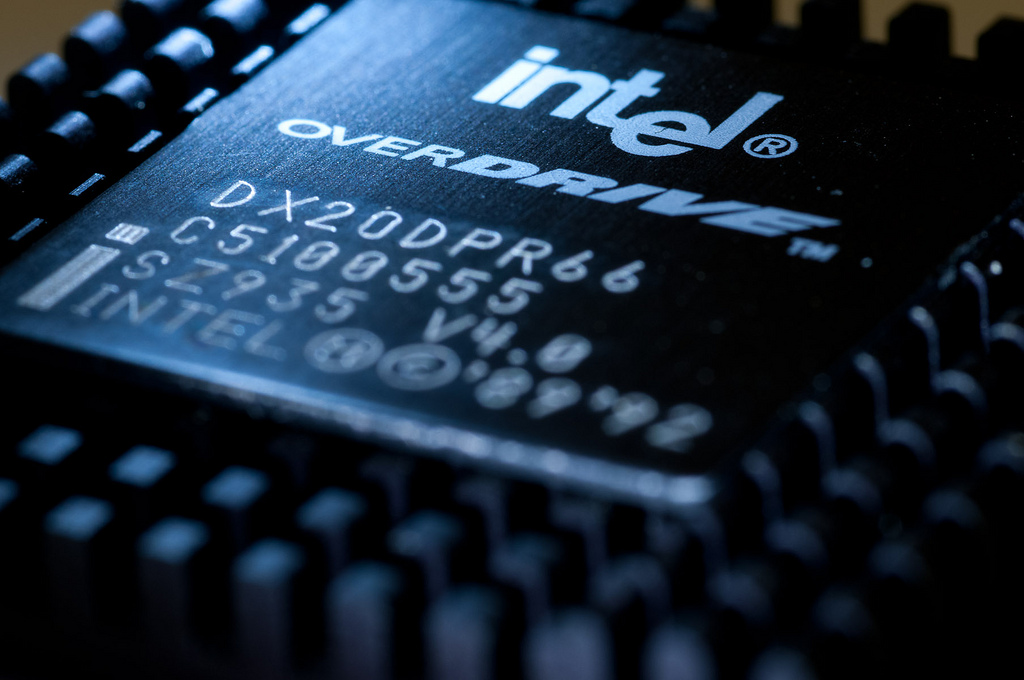 The ability to choose between the Intel486 Overdrive and 486SX processors opened the way to an upgrade, and then to the national overclocking of the CPU
The ability to choose between the Intel486 Overdrive and 486SX processors opened the way to an upgrade, and then to the national overclocking of the CPU
In order for society to have a goal, Intel resorts ... correctly, to the color differentiation of the pants of the processors! That is, it releases a cheaper “proto-Tseleron” 486SX with an arithmetic coprocessor disabled, and then the “Intel-Extreme” Intel Overdrive for this, which was much faster because it worked at twice the frequency of the system bus. And nod-winks, they say, "look, you can then upgrade from a younger processor to a more productive one!".
Wine shop. Suitable vacationer.
- Is there wine?
- What do you want?
- Agdam.
- Yes, - pours wine from a single barrel into the bottle, sticks a label, gives it away. Fits the following:
- Port "Southern Night" is?
- Yes, - pours from the same barrel, sticks a label, gives. One more:
- Is there any champagne?
- There is. Labels run out. Pour?Are you laughing? Since the days of i486, customers have become accustomed to the fact that the same motherboard is physically capable of “pumping” CPUs of different performance (and the previous 80386 was most often soldered to the motherboard and changing it was akin to picking BGA in modern ultrabooks). And Intel with the transition to the Pentium and Socket 5 creatively approached the runs of individual models in the line.
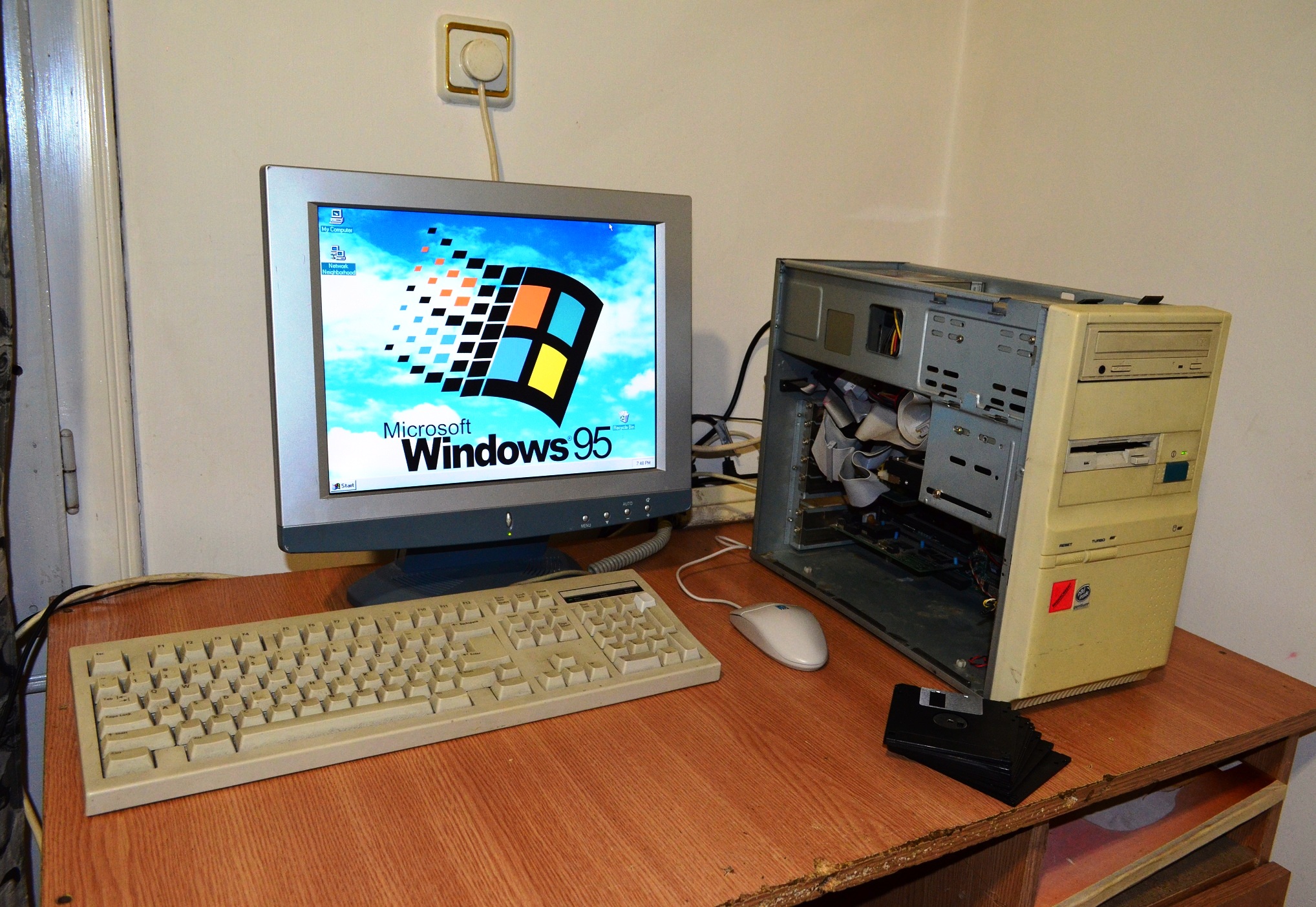 Unique user experience and incredible potential of the PC of the 1990s.
Unique user experience and incredible potential of the PC of the 1990s.The first generation Pentium became famous
for its bugs , not for performance, and the updated Pentium P54C on the 600 nm process technology existed in versions 75, 90 and 100 MHz, but in fact it was the same processor, differently "locked up" by the manufacturer. Intel could have made younger models exclusively by rejecting “stones” that are not capable of operating at 100 MHz, but the demand for low-end Pentium was much higher than the flagship ones, and therefore anyone could buy a cheap CPU, and then adjust the multiplier and bus frequency in the motherboard Equalize it with more expensive models.
This is the beginning of the "popular" overclocking. Not a sporting interest, not attempts to reach new heights with an old computer, but simply an answer to laziness and total unification by the processor manufacturer.
And then overclocking fans made life difficult, and the following belief formed from this.
"Everyone has long known" №3. Multipliers blocked to annoy ordinary workers
Not without it, of course. But in the early 1990s, a very small part of customers were engaged in self-assembly, rather than buying ready-made PCs (because the assembly process was somewhat more complicated than today), and of those who were still engaged, overclockers made up an insignificant part.
The fact is that the processors began, I'm sorry, to “make up” the sellers of ready-made computers. They bought the cheapest Pentium, overclocked them to the maximum level with which the PC was able to work (they checked it for a short time), sold the assembly under the sauce “computer with a flagship CPU!” With the appropriate surcharge, and put the difference in their pockets.
Especially talented guys grind off, and then re-applied the “cooler” marking on the Pentium to cover their tracks. The fact that Intel did not “reach” the desired profit and that the re-overclocked processors sometimes were rejected and worked unstably, unnecessarily - the customers' discontent grew, Intel's reputation deteriorated. Therefore, for the Pentium II, the multiplier value was limited, but the wave was already unstoppable, and buyers quickly mastered bus acceleration.
"Everyone has long known" №4. The golden age of overclocking is in the past
As soon as your legitimate occupation becomes quite popular, there will always be uncles in costumes who will want to “regulate” this activity. We have already passed this with messengers, cryptocurrency, online trading and so on. Joyful times also passed in overclocking, when relatively cheap AMD Phenom of two generations overclocked the more expensive Intel, and Core 2 Duo and Core 2 Quad with a blocked multiplier accelerated by 30-40% without problems.
On the other hand, since 2009, suitable for overclocking processors, in which it was possible to "turn" everything, went on sale. For some time, extreme overclocking could be done even on the Pentium G3258 budget calculator, and now AMD has unlocked the multipliers in all RyZEN processors, and Intel led the Core i3 category processor with the “adult” L3 cache (up to 5). GHz is about four cores and the performance is higher than that of “no progress! I'll be sitting on the old Sandy Bridge! ”I7-2600K. Yes, this is a ridiculous and very belated victory over a 6-year-old processor, but we have come to relatively cheap gigahertz and this is a reason for joy.
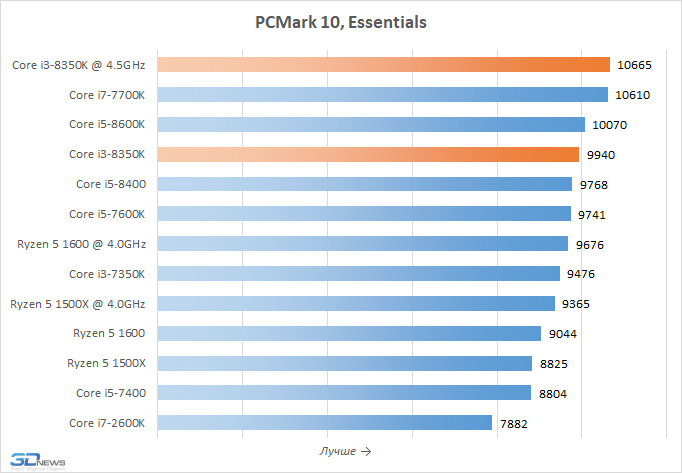 Core i3 - no longer “vegetable of unknown purpose” ( Source )
Core i3 - no longer “vegetable of unknown purpose” ( Source )The situation with the RAM is also the best possible - the popularity of overclocking modules has done its job, and now, for example, HyperX Fury DDR4 “efficient dies” (
3100+ MHz in overclocking , by the way) cost as much as “office- working "Kingston" modules with less high base frequency!
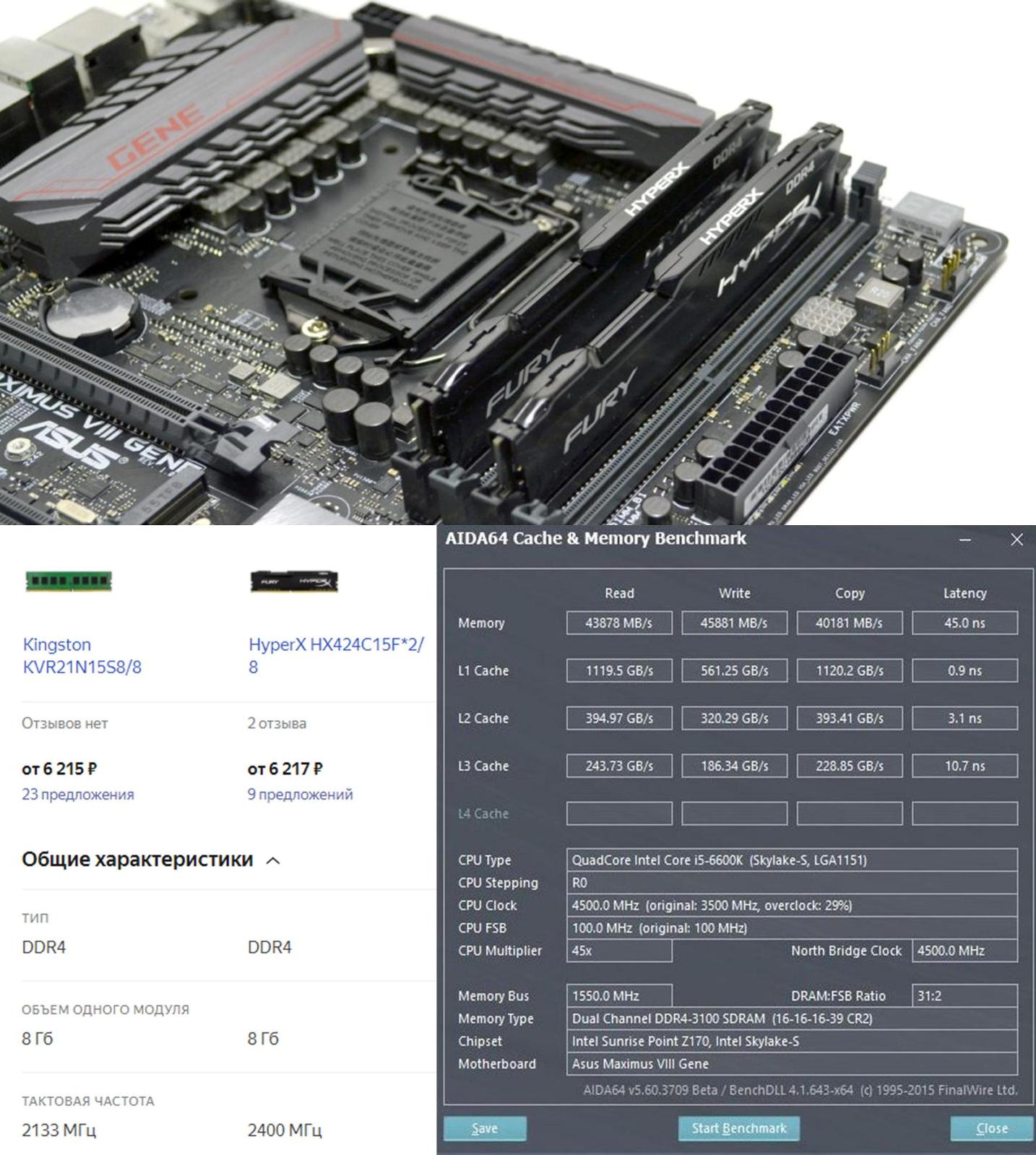 Show overclocking tax here?
Show overclocking tax here?Even professional overclockers (and they chase processors "for all the money") do not have the concept of a bygone era for overclocking - each generation of flagship processors accelerates differently. For us, all the flagship Intel, starting with Ivy Bridge (and its “chewing gum” instead of solder under the lid + the need for scalping) on Kaby Lake look the same as the New Year's concerts on TV in different years, but the difference (in processors) is. At least since Sandy Bridge, the overclocking potential of the processors
alternated no worse than bald and hairy presidents at the head of our state: Sandy Bridge kept overclocking at a maximum of -50 degrees, Ivy Bridge at -196 degrees, Haswell mastered -140, Skylake could -196 . And so on.
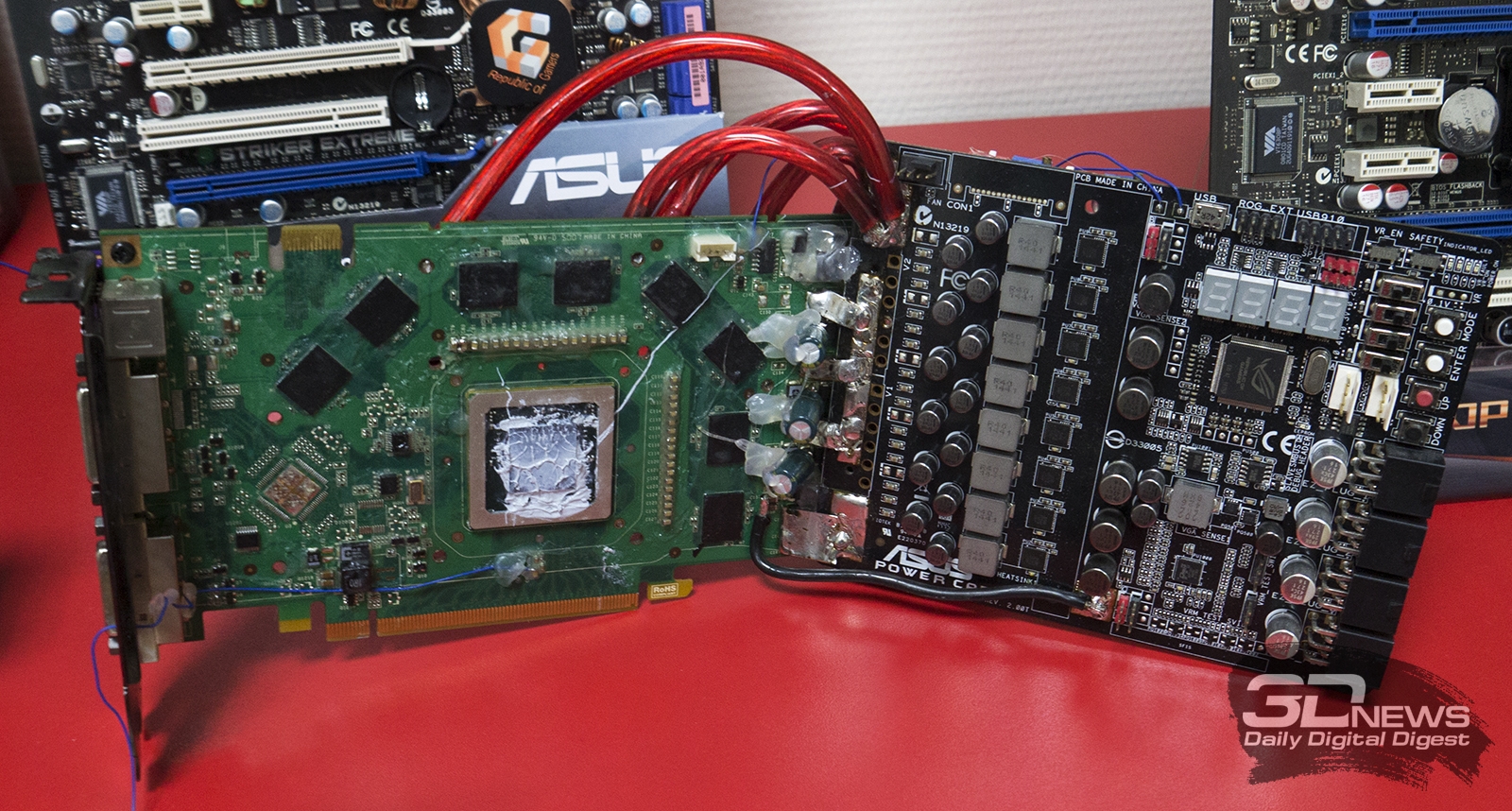
"Heal before the wedding." Overclocking video cards faintly resemble civilian relatives by design (
source )
Lovers of serious overclocking are full of problems, but more often they are not related to processors - the “unsportsmanship” of allegedly overclocking video card flagships brings. Because in the understanding of overclocking professionals, all kinds of GeForce Titan and similar Vega are yachts with TVs, pools and orchestras, and not sports equipment. Therefore, all this splendor has to be “gutted”, replacing the cooling system, power supply system and capacitors, and the flagship AMD graphics “freezes” because of the HBM / HBM2 memory that is unsuitable for serious overclocking (compared to GDDR5X).
And yes, a lot of cores in extreme AMD Threadripper will not translate into world records, because the processor does not like "winter sports", that is, nitrogen and work at extremely low temperatures. But you are not embarrassed that in racing championships cars only look like civilian "carts" (to advertise public sedans / hatchbacks), whereas in fact they often even have headlights - imitation and stickers "based on" real-life cars? It is more important to remember that the choice is finally there, and even the youngest eight-core RyZEN 7 1700 is able to show the result of the more expensive 1700X level, while in the Intel camp the indices of the “most holy” Core i5 and Core i7 are gradually devalued - the competition is paying off.
"Everyone has long known" №5. No celebration and innovation, overclockers just pour iron with nitrogen
On the Internet, we are all macho and experts in all spheres of life, but at “Igromir-2017”, where
the HWBot Workshop
operated , anyone could come, see, disperse and win. But, amazingly, the results in the benchmarks for all were different, and far from champion in most cases. Because you need to know the subtleties of using thermal interfaces, the permissible limits for the performance of each individual piece of iron, to be able to fence modifications of video cards "on the knee", to feel the correct settings for hardware. Overclocker can be, but only after long hours of practice.
But with a variety of cooling methods in professional overclocking, things are really rotten. Only mountains can be cooler than mountains, and liquid helium is cooler than nitrogen in terms of cooling efficiency. But he didn’t go over and is unlikely to go into the mainstream in the near future, because even a modest attempt “let me quickly overclock this processor with this video card” flies into a million rubles. This is about 20 times more expensive than acceleration using liquid nitrogen under the same conditions.
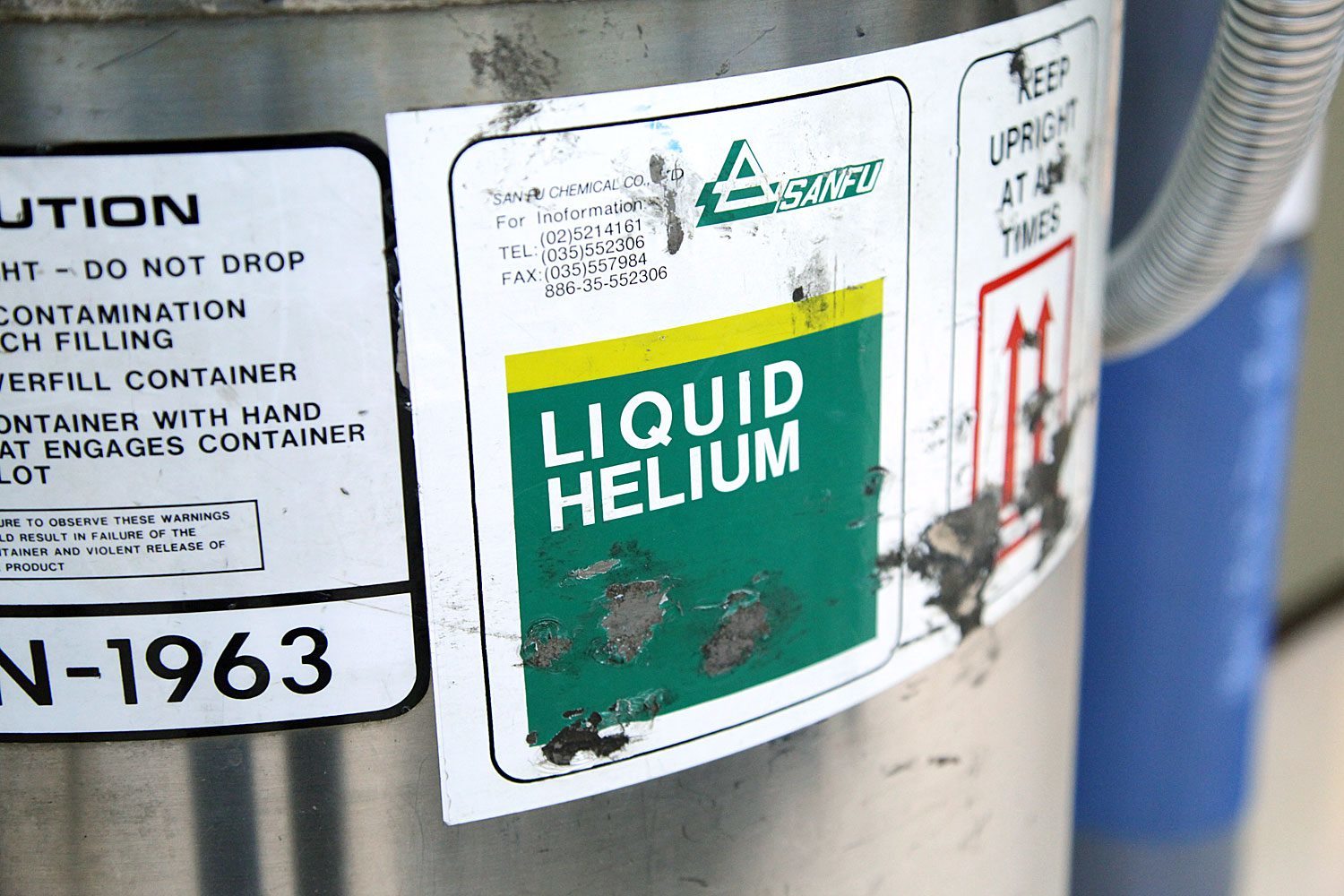 A huge tank with liquid helium is barely enough for one bench session
A huge tank with liquid helium is barely enough for one bench sessionIn addition, not every iron is capable of functioning at -269 degrees Celsius, which is piled up by liquid helium. Older AMD platforms behave stably even at this temperature, but neither validation (a record high megahertz value), nor, even more, will set performance records, and the potential of more modern platforms is easier to disclose at -196 ° C and dispense with liquid nitrogen.
However, overclocking
lovers are not the only ones who are alive with nitrogen - the latest performance records are Russian overclockers
Smoke ,
slamms ,
_12_ and
Atheros , as well as a guest from the Netherlands
, installed
TaPaKaH using SVO, in which antifreeze cooled dry ice
in the house that Jack built . This was enough for the four GTX 1080 Ti in SLI to accelerate in several disciplines at once to the prize level. But Intel Core i9 7980XE Skylake-X (18 cores, 36 threads!) Squeezed out 5.7 GHz using liquid nitrogen. In all cases, monstrous confer is assisted by Hyper X Predator DDR4 memory. And the guys shook the old days and dispersed the old Intel Core 2 Duo Wolfdale (the same one on Socket 775) to 6466 MHz!
There is always a reason to remember the times when the grass was greener, even if you had the most chic iron of a new generation in front of your nose. :) In general, the results have pleased everyone and it was definitely worth the merger of HyperX, ASUS and Intel around craftsmen from the Russian Federation.
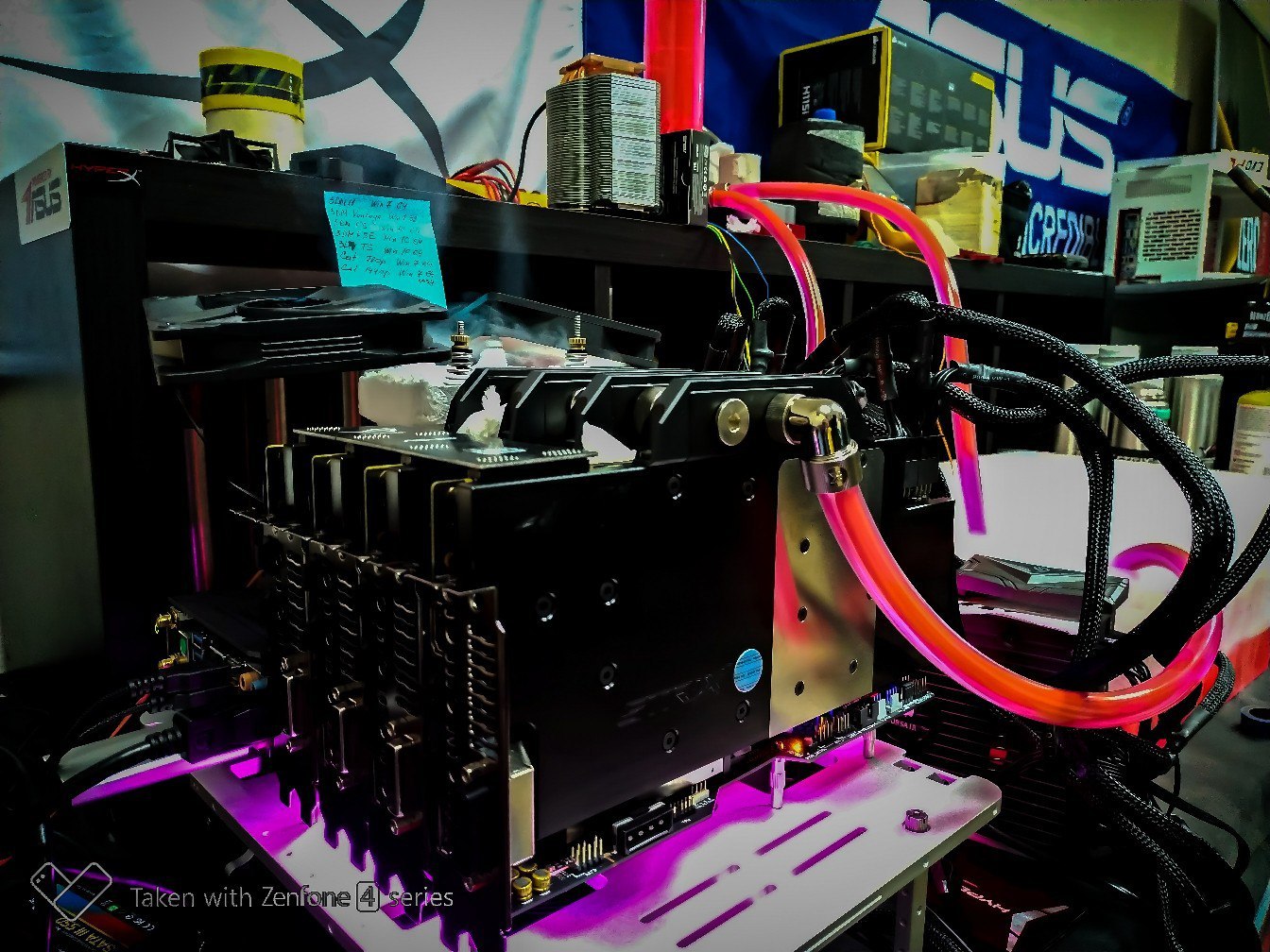 The four GeForce GTX 1080 Ti is cooled by the NWO circuit, and the pool with dry ice is responsible for the antifreeze temperature (photo: ASUS OC Summit 2017)
The four GeForce GTX 1080 Ti is cooled by the NWO circuit, and the pool with dry ice is responsible for the antifreeze temperature (photo: ASUS OC Summit 2017)But this is the lyrics, and for the "home" overclocking, the industry presented us with many processors, which for many years in a row easily take the bar at 5 GHz per core. Even on air cooling, you can "knock out" more, only in the case of Intel chips they will have to "properly cook." Intellectuals do not intend to break the tradition of disrupting the overclocking potential of fast Core i3 / i5 / i7, so scalping is our best friend.
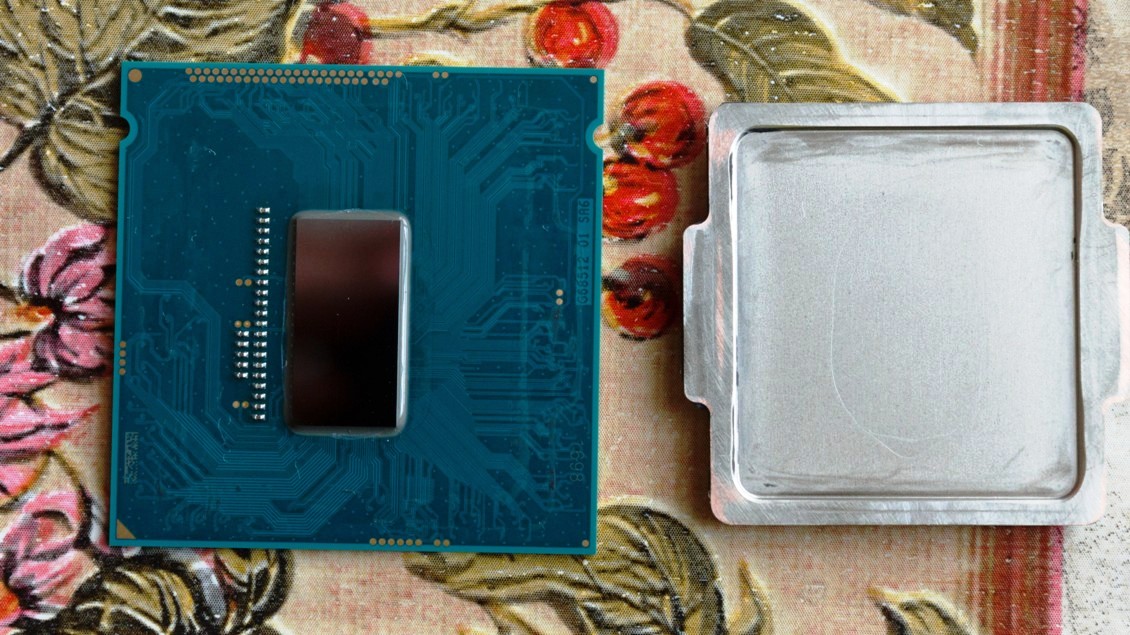 The new age era - any overclocking of Intel processors begins with scalping
The new age era - any overclocking of Intel processors begins with scalpingLittle romance, but many benefits
One could recall many more “jokes” and other puns for iron producers - from the incompatibility of fresh chipsets with Intel Coffee Lake to the pursuit of producers of motherboards for the possibility of overclocking “non-overclocking” chips on the bus during the time of Skylake. Of course, the ring is compressed - technical processes are getting thinner, the "ceiling" of performance is getting closer. Moreover, almost every modern processor is not a processor at all, but an APU-processor with a memory controller and other extras under the hood. But overclocking, I'm sorry, I got my long-awaited legalization, processor performance has grown at a record pace over the past couple of years, more suitable for daily overclocking of chips, not to mention racing SSD, motherboards and RAM.
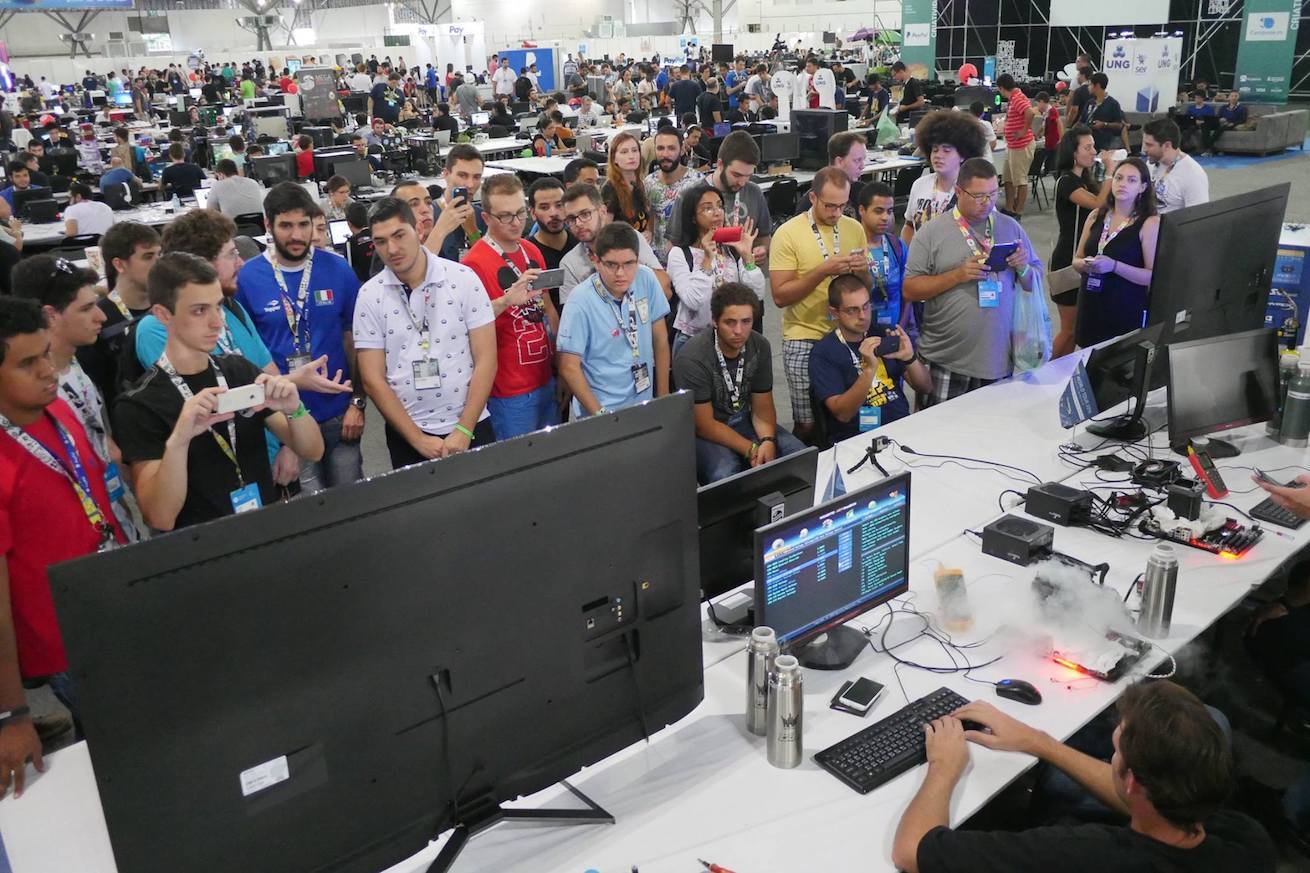 Overclocking Championship, Las Vegas, 2017
Overclocking Championship, Las Vegas, 2017As you can see from the lessons of history, overclocking was “free” and was considered a slip of the processor manufacturers for only a very short period of time in the era of the first Pentium. All subsequent time overclocking was a passion of enthusiasts on the right for extreme sports. Since then, nothing has changed, and this is the best news for those who love and believe in the PC platform.
Happy all! Subscribe and stay with us - it will be interesting! For more information about Kingston and HyperX products, visit
the company's official website . In choosing your kit HyperX help
page with visual aids .